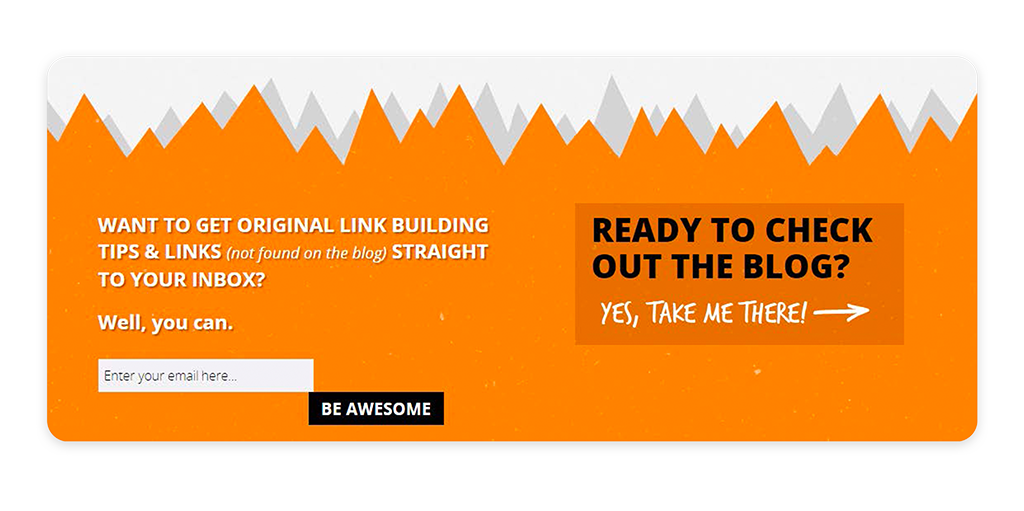Where Should You Consider Inserting Calls-To-Action Throughout Your Blog Post
Savvy bloggers understand the power of strategically placed Calls to Action (CTAs) within their posts. By incorporating CTAs that align with their blogging goals, such as encouraging newsletter subscriptions or promoting related content, bloggers can effectively guide their readers towards taking desired actions. If you’ve been wondering where you should consider inserting calls-to-action throughout your blog post, keep reading!

CTAs are the gentle nudges that guide readers towards meaningful interactions with a blog.
Whether it’s inviting them to explore related content, sign up for newsletters, or make a purchase, CTAs play a pivotal role in shaping the user experience.
Typically presented as clickable buttons or hyperlinks strategically embedded within the content, CTAs serve as visual cues that draw attention to specific actions.
The strategic placement of CTAs within a blog post can significantly impact their visibility and effectiveness. By strategically positioning CTAs at key junctures, such as at the end of compelling paragraphs or after informative sections, bloggers can maximize their visibility and encourage reader interaction.
A well-placed CTA seamlessly integrates into the narrative, capturing the reader’s attention without disrupting their reading flow. Conversely, a poorly placed CTA may go unnoticed or come across as intrusive, diminishing its impact and potentially alienating readers.
Today, we’ll delve into the nuances of CTA placement and explore best practices for integrating CTAs seamlessly into your blog posts. By incorporating strategically placed CTAs throughout your content, you can inspire readers to take action, increase conversions, and ultimately enhance the effectiveness of your blog posts.
Where Should You Consider Inserting Calls-To-Action Throughout Your Blog Post
Strategic placement of CTAs is essential for maximizing their effectiveness. Consider the following key areas for inserting CTAs throughout your blog post:
- At the Beginning: Start your blog post with a compelling CTA to immediately engage readers. Whether it’s inviting them to subscribe to your newsletter or offering a free resource relevant to the topic at hand, an enticing CTA at the outset sets the tone for reader interaction.
- Within the Content: Integrate CTAs organically within the body of your blog post, where they align with the flow of the content. Highlight key benefits or value propositions related to the CTA to entice readers to take action. For example, if your blog post discusses the benefits of a particular product or service, consider inserting a CTA inviting readers to learn more or explore additional resources.
- At the End: Conclude your blog post with a strong CTA that encourages readers to take the next step. Whether it’s prompting them to leave a comment, share the post on social media, or explore related content, a well-placed CTA at the end of the post reinforces engagement and encourages further interaction.
CTA Best Practices
Now that we’ve explored where to insert CTAs throughout your blog post, let’s get into some best practices for crafting effective CTAs:
A CTA serves as a guiding beacon, directing readers towards specific actions such as subscribing to a newsletter, downloading a resource, or making a purchase. But how do you ensure that your CTAs are effective in driving engagement and conversions?
Even if you are not blogging for business and have a personal blog (What Is A Personal Blog?) you’ll probably want to grow your email list or at least have a newsletter. That’s the action you want to call your readers to take!
Crafting effective CTAs involves implementing best practices to maximize their impact:
1. Conciseness and Clarity
Keep your CTA concise and straightforward. Clearly state what action you want your audience to take. Whether it’s signing up for emails, making a purchase, or joining a community – you’ll want a clear call to that action. Avoid ambiguity and ensure that the message is easily understood by your target audience.
2. Visibility
Ensure your CTA stands out visually. Use contrasting colors, bold fonts, and ample white space to draw attention to it. The CTA should be immediately noticeable and distinguishable from the surrounding content to capture the reader’s attention effectively.
3. Strategic Placement
Position your CTA where it makes the most sense in the user journey. Whether it’s at the end of a social media post, in an email, or on a landing page, consider the context. Tailor the placement of your CTA to align with the user’s intent and provide a seamless transition to the desired action.
4. Benefit-Oriented Text
Craft supporting text that emphasizes the benefits of taking the desired action. Explain how it will improve the user’s experience or solve their problem. Highlighting the value proposition encourages users to engage with the CTA and increases the likelihood of conversion.
5. Testing and Optimization
Continuously test your CTAs. A/B testing helps you refine your approach and maximize results. Experiment with different messaging, designs, and placements to identify what resonates best with your audience. Analyze performance metrics to inform future optimizations and drive continuous improvement.


Common CTAs for Marketing Campaigns
Incorporate common CTAs into your blog posts to drive specific actions and achieve your marketing goals:
- “Subscribe”: Invite readers to subscribe to your newsletter or mailing list to receive updates, news, and exclusive content.
- “Download Now”: Encourage readers to download a free resource, such as an e-book, whitepaper, or guide, relevant to the topic of your blog post.
- “Learn More”: Prompt readers to explore additional content or resources related to the topic at hand, such as related blog posts, articles, or videos.
- “Contact Us”: Invite readers to reach out to you directly for more information, inquiries, or assistance with products or services mentioned in your blog post.
- “Shop Now”: Drive immediate sales by prompting readers to visit your online store and make a purchase.
How To Convert With Your Content
A landing page is a standalone web page designed for a specific marketing campaign or offer. It serves as a destination for visitors who click on an ad or promotional link. Including a clear CTA on your landing page is essential for guiding visitors towards the desired action.
Email marketing remains a powerful tool for nurturing leads, fostering customer relationships, and driving conversions. By providing valuable content and engaging CTAs in your emails, you can encourage recipients to take action and move further along the sales funnel.
Offering freebies, such as e-books, guides, or templates, is an effective strategy for collecting emails and building your marketing email list. You will want to include clear and concise CTAs that encourage readers to join your email list.
Affiliate marketing is another lucrative opportunity for bloggers to monetize their content. By promoting products or services through affiliate links, bloggers can generate passive income. Including clear CTAs and tracking codes in your affiliate promotions can help increase sales and optimize your marketing efforts.
Google Analytics provides valuable insights into your website traffic, user behavior, and conversion metrics. By analyzing data from Google Analytics, you can identify areas for improvement, track the performance of your CTAs, and make data-driven decisions to enhance your marketing strategy.
In Conclusion, Where Should You Consider Inserting Calls-To-Action Throughout Your Blog Post
To sum it up, it’s essential to strategically place CTAs throughout your blog posts. Consider inserting CTAs at key touchpoints, such as:
- At the beginning of your blog post to capture readers’ attention and set the tone for engagement.
- Within the content, where they naturally align with the topic and provide additional value to readers.
- At the end of your blog post to reinforce key messages and encourage further action.
By incorporating these strategies and leveraging CTAs effectively, you can enhance reader engagement, drive conversions, and achieve your marketing goals.
For more insights on optimizing CTAs in your blog posts, explore our other blog posts or visit the HubSpot Marketing Hub for comprehensive resources and tools. Now you know the answer and where you should consider inserting calls-to-action throughout your blog post. Start implementing these strategies today to unlock the full potential of your CTAs and drive meaningful results for your business.





